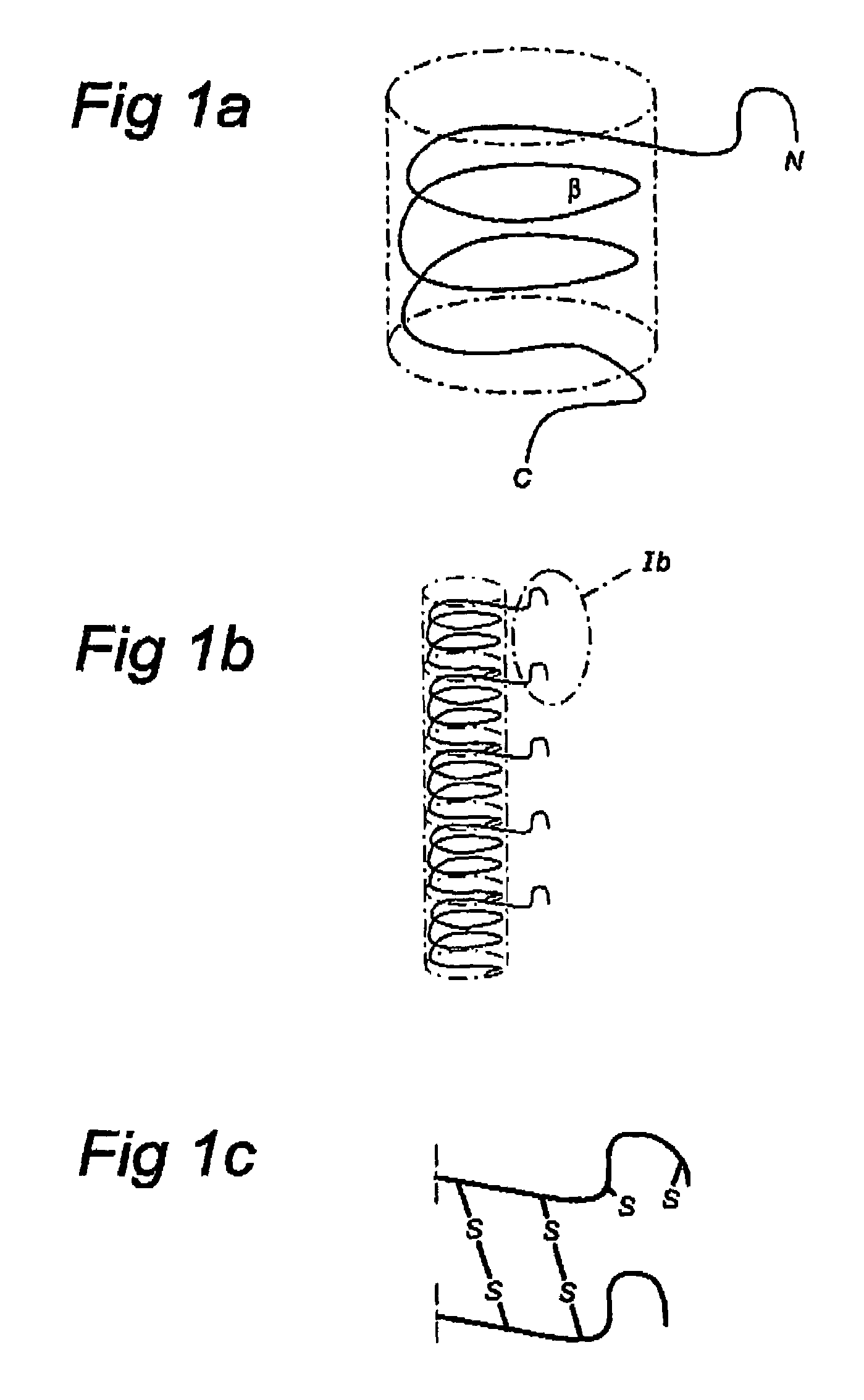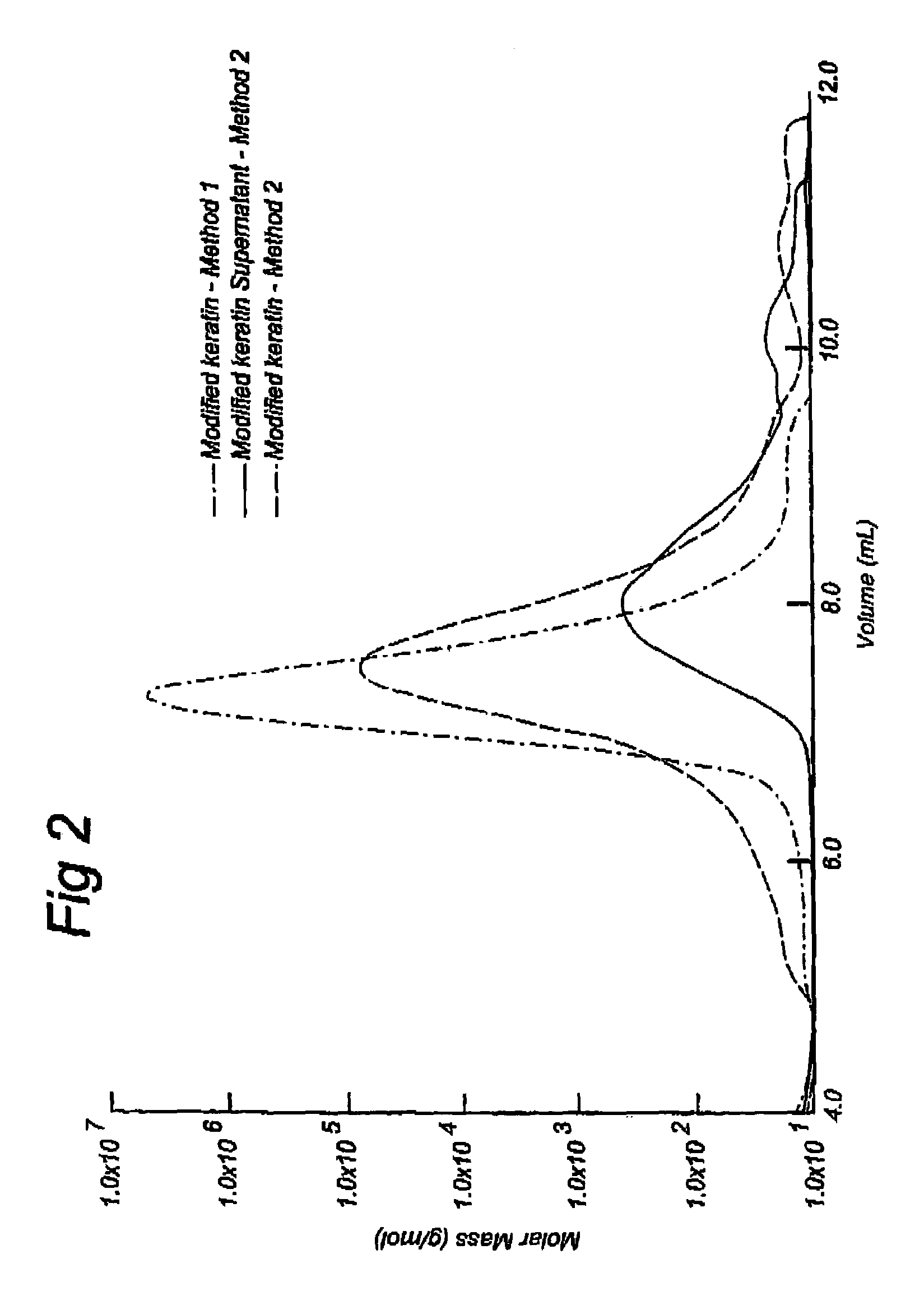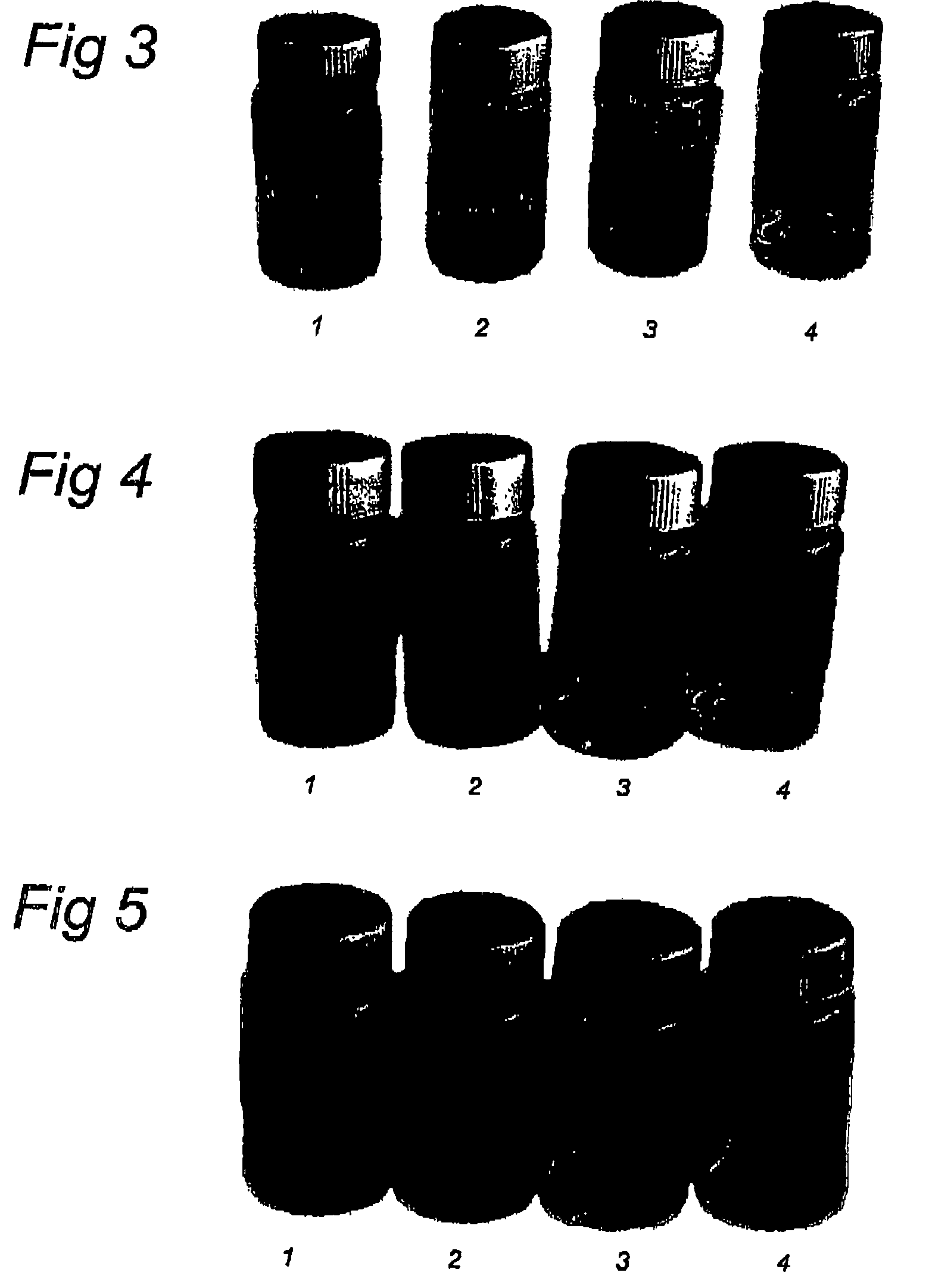Keratin-based products and methods for their productions
- Summary
- Abstract
- Description
- Claims
- Application Information
AI Technical Summary
Benefits of technology
Problems solved by technology
Method used
Image
Examples
example 1
Preparation of Partially Modified Dispersible Keratins with and without Partial Degradation
[0094]In one comparative experiment the procedure described by Schrooyen et al. (Journal of Agricultural and Food Chemistry; 2000; 48(9); 4326–4334) is used. Poultry feathers were cleaned using water and detergents. Cleaned and dried feathers (40 g) were mixed with one liter of an aqueous solution of 2-mercaptoethanol (125 mM), urea (8M) and EDTA (3 mM) in Tris-buffer (0.2 M, pH 9.0) and stirred for 1 hour. Undissolved feathers were separated from the dissolved keratins using a cheese cloth and a Whatman 54 filter (10 μm pore size). After filtration, 2 grams of monochloroacetic acid was added to the filtrate and the pH was kept constant at 9.0. After 1 hour the aqueous solution was dialysed and lyophilised. The yield of dry keratin product was 45%, based on 100% keratin starting material (weight of feathers). This product will be referred to as Modified Keratin—Method 1.
[0095]In a second exper...
example 2
Preparation of Partially Degraded Keratins with Various Degrees of Modification
[0103]Poultry feathers were cleaned using water and detergents. Cleaned and dried feathers (60 g) were mixed with 1.5 liters of a hot aqueous (NH4)2S-solution (0.1M, pH 12.5, 60° C.) and stirred for 1 hour. Undissolved feathers were separated from the dissolved keratins using a cheese cloth and a Whatman 54 filter (10 μm pore size). The keratin yield in the filtrate was 59.5%, based on 100% keratin starting material (feathers). After cooling to 20° C., the filtrate was split in 3 parts of 500 ml each: to one part no monochloroacetic acid was added and the pH was set at 9.0 (yielding essentially unmodified keratin, referred to as Unmodified Keratin), to a second part 1 gram of monochloroacetic acid was added and the pH was set at 9.0 (yielding essentially 50% of SH-modification, refereed to as 50%-Modified Keratin), to a third part 5 grams of monochloroacetic acid was added and the pH was set at 9.0 (yield...
PUM
| Property | Measurement | Unit |
|---|---|---|
| Temperature | aaaaa | aaaaa |
| Temperature | aaaaa | aaaaa |
| Fraction | aaaaa | aaaaa |
Abstract
Description
Claims
Application Information
 Login to View More
Login to View More - R&D
- Intellectual Property
- Life Sciences
- Materials
- Tech Scout
- Unparalleled Data Quality
- Higher Quality Content
- 60% Fewer Hallucinations
Browse by: Latest US Patents, China's latest patents, Technical Efficacy Thesaurus, Application Domain, Technology Topic, Popular Technical Reports.
© 2025 PatSnap. All rights reserved.Legal|Privacy policy|Modern Slavery Act Transparency Statement|Sitemap|About US| Contact US: help@patsnap.com



